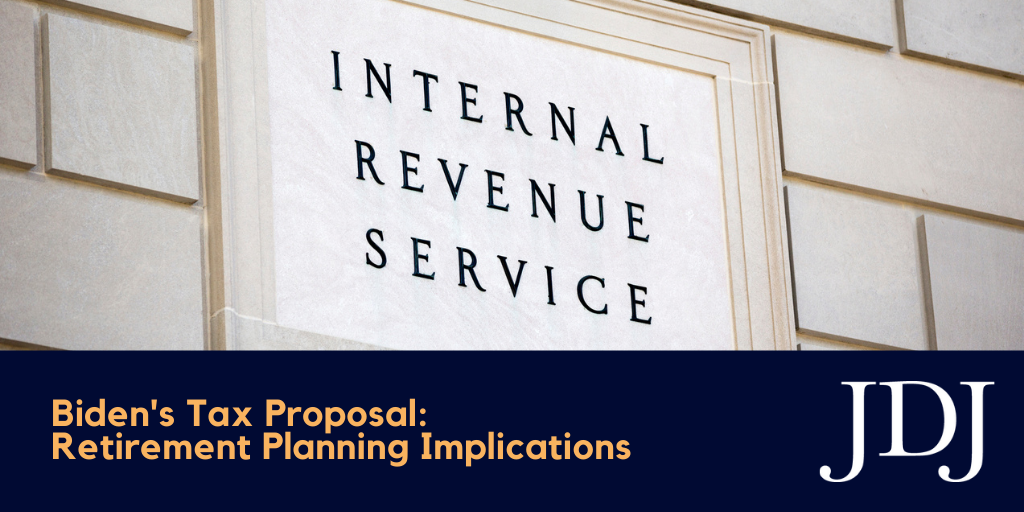Biden Tax Proposal: Retirement Planning Implications

The House Ways and Means Committee’s tax proposal released on September 13 includes many provisions for retirement plans that should be considered for planning purposes.
This is the second of three posts outlining the key points of this legislation related to Biden’s $3.5 trillion dollar infrastructure package. In this article, we focus on the retirement planning implications for high net worth (HNW) individuals. Most of these provisions would go into effect on January 1, 2022, unless otherwise noted. Please note that this is a fluid situation, and final regulations could differ from the below once the Senate introduces their proposal and President Biden signs the final bill.
The tax proposal includes various changes to the treatment of retirement accounts with a value of $10 million or greater (i.e., “Mega IRAs”):
- Barring of further contributions to a Roth or traditional IRA if (1) the total value of the taxpayer’s IRAs exceeds $10 million as of the end of the prior tax year, and (2) the taxpayer’s income is greater than:
- $450,000, if married filing jointly
- $400,000, if single or married filing separately
- $425,000, if filing as head of household
- Required minimum distributions (RMDs) – new rules for taxpayers (1) with total retirement account values greater than $10M as of the end of the prior tax year and (2) who have annual income greater than the limits above. Please note that the $10M and $20M thresholds below apply to the combination of all of the taxpayer’s traditional IRA, Roth IRA and defined contribution (e.g., 401k) retirement accounts. These RMDs are applicable regardless of the taxpayer’s age and are not eligible to be rolled over to another retirement account.
- RMD for retirement account values between $10M-$20M:
- RMD = 50% of the excess total account value over $10 million
- Example: if total retirement accounts are valued at $14M as of 12/31/2021, then 2022 RMD = $2M
- For retirement account values greater than $20M, the RMD is the combination of:
- The lesser of:
- Excess amount over $20M (when totaling all retirement account values, as outlined above), or:
- The entire balance in the account
- Plus:
- 50% of the amount between $10M-$20M, as described above
- One caveat to this rule is that those with account totals exceeding $20 million must pull from Roth IRAs and 401ks first.
- Example: As of 12/31/2021, taxpayer has a Roth IRA valued at $3M and total retirement accounts valued at $24M. The entire $3M IRA would need to be withdrawn in 2022, since the value is less than the $4M total excess over $20M. In addition, the taxpayer would need to withdraw $5M (50% of the value between $10M-$20M), resulting in a total RMD of $8M.
- The lesser of:
- RMD for retirement account values between $10M-$20M:
The proposal also eliminates Roth IRA conversions for taxpayers with income greater than $400,000 (single), $450,000 (joint) or $425,000 (head of household), effective January 1, 2032.
Lastly, the bill would prohibit IRA owners from holding “exclusive” investments in IRAs (e.g., those available only to Accredited Investors), starting in 2022. IRAs already holding these investments would be subject to a two-year transition period starting in 2022, to allow time for removing the assets from the IRAs.
Because individual situations vary in terms of structure and complexity when it comes to tax planning, it is important to work with qualified advisors and tax professionals to evaluate and develop an appropriate strategy. Please contact a member of your JDJ team for assistance.



















